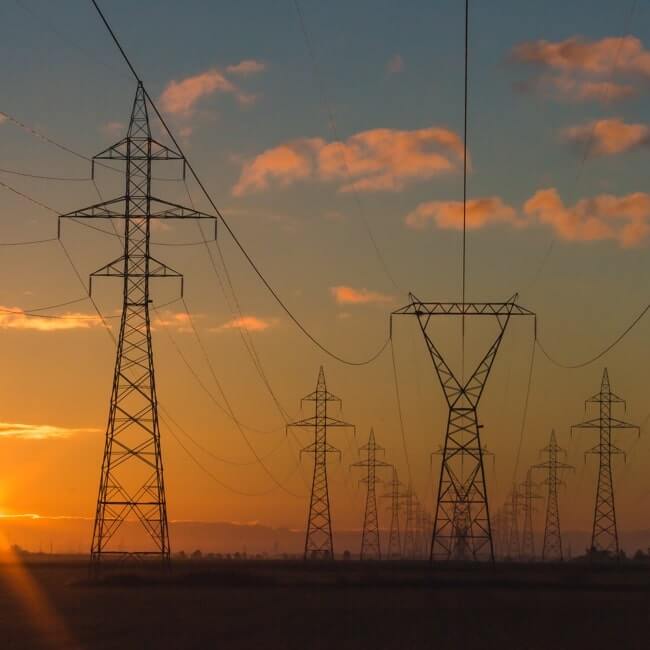Climate models to mitigate risks in the construction industry: a look at Latin America
This press release from AON was published in English using an automatic translation system
In an era of increasing climate-related challenges, the construction industry is turning to advanced climate models to strengthen its risk management strategies.
The effective implementation of climate models, based on sustainable strategies, ranging from planning to execution, is crucial to address climate change problems, improve resilience, protect vulnerable communities, and contribute to recovering from the economic impact caused to citizens, businesses, and public authorities.
MAIN CONCLUSIONS
Leveraging climate modeling is critical to effective risk management at every stage of a construction project lifecycle.
The application of advanced models helps mitigate risks and fosters resilience, enabling construction companies to optimize long-term project outcomes.
Early implementation of climate models and professional guidance on their use is key to managing complex risks in construction projects.
Latin America is making progress in using climate models to ensure safe and sustainable infrastructure.
OVERVIEW
In 2023 and 2024, natural disasters impacted communities around the world. Events such as earthquakes, severe convective storms, and catastrophic flooding disrupted construction project schedules and caused major financial losses for the industry. Compounded by record heatwaves, the urgency for risk management strategies focused on mitigating the effects of climate change has never been greater.
In response, construction companies are seeking insights into the effect of climate on their projects and are considering the tactical use of risk models to identify and quantify hazards that could impact projects, impact design and construction decisions, as well as inform risk transfer strategies.
To understand the importance of climate models, it is necessary to understand that when making weather predictions, there is a lot of similarity to when monitoring infectious diseases in populations to reduce the spread of a disease; scientists and experts use something called “models” to better understand their effects and anticipate the consequences. In the context of science, these models seek to simulate real-world situations, they are used to better understand certain processes and to project what may happen in the future.
There are clear differences between catastrophe models and climate models:
Catastrophe models use historical data to simulate thousands of scientifically probable events and provide insight into loss potential.
Climate models seek to represent the atmosphere coupled with other Earth systems in order to understand and project natural and man-made changes in climate. Generating and running a climate model is a complex process that requires developing mathematical equations that simulate natural processes. The data used is extremely large in something called “spatial and temporal resolution.” For spatial resolution, the planet is divided into a three-dimensional grid, and in each of the squares, mathematical equations are applied and the results evaluated, incorporating global atmospheric and oceanic observations to show how changing environmental conditions may influence future weather or climate events.
IN DEPTH
Facts about natural disasters in 2024
According to Aon's Climate & Catastrophes 2024 report, this was a historic year globally for economic and insured losses due to natural disasters, which amounted to $380 billion, 22% above the 21st century average, and insured losses worth $21 billion, 118% above the average.
Notable events included devastating earthquakes in Turkey and Syria, severe convective storms in the United States, flooding in China, and widespread wildfires. At least 95,000 people lost their lives as a result of these catastrophes (when the 21st century average was 71,430 deaths). The highest number of deaths occurred from the earthquakes in Turkey and Syria.
Excluding the United States, the Americas suffered losses of $45 billion, with Hurricane Otis being the costliest single event, with compensation exceeding $2 billion. Drought affected several regions in South America, and Canada suffered an unprecedented wildfire season. All of these climatic events disrupted the schedules of various construction projects and caused huge financial losses for this industry.
Recent extreme weather events in Latin America
1) Floods: In 2022 and the first half of 2023, severe flooding affected countries such as Guatemala, Peru, Bolivia, Colombia, Venezuela, Brazil and Ecuador, impacting more than 5 million people and causing more than a thousand deaths.
Flooding in Peru during 2023 was particularly devastating, with torrential rains causing landslides and damage to infrastructure.
2) Droughts: Since 2019, South America has faced some of the most severe droughts in decades, affecting countries such as Argentina, Uruguay, Honduras and Brazil. These droughts have had a significant impact on agriculture and food security.
In 2015, São Paulo experienced its worst drought in more than 80 years, leading the city to a critical water crisis.
3) Forest fires: In 2022 and 2023, devastating forest fires were recorded in Argentina, Chile and the Pantanal region, with significant economic losses and hundreds of deaths.
4) Heat waves: In 2022, South America experienced prolonged and intense heat waves that contributed to dry conditions, increased risk of wildfires, and impacts on agricultural production and health.
5) Tropical cyclones: Hurricane Ian in 2022 caused damages estimated at approximately 100 billion dollars, affecting mainly countries in the Caribbean. And in 2023, Hurricane Otis, whose consequences were estimated by Aon.
6) Landslides: Heavy rains have triggered landslides in several countries, especially in mountainous areas. These landslides have resulted in human losses and damage to critical infrastructure.
Whether in Latin America or another region, faced with the irreversible nature of climate events, when the construction industry adopts sustainable and resilient practices, it can minimize its risks and significantly contribute to a more sustainable future.
“Managing complex risks in construction projects in Latin America is a dynamic process that requires careful planning, inter-institutional collaboration and the use of advanced technologies. By taking a proactive approach to identifying, assessing and mitigating risks, the industry can improve its resilience to climate challenges and ensure the long-term success of its projects,” explained Clemens Freitag: Industry Leader, Construction & Infrastructure, Latin America at Aon.
Application of climate model in construction projects
Integrating advanced catastrophe and climate models into risk management frameworks will make it easier for construction companies to anticipate and address threats posed by natural disasters and climate change. Climate and catastrophe models specifically support the construction industry in the following areas:
Assessing site risks and hazards: The climate model helps understand the baseline risk of building in a given geographic area, assess current climate risks, identify potential hazards from the earliest stages of project risk assessment and their evolution throughout the construction lifecycle. This includes region-specific risks such as sea level rise for coastal projects and extreme heat for projects in heat-prone areas.
Informed decision making: By providing comprehensive information, climate models facilitate informed decision making, can mitigate risks (such as location), help identify physical measures and best resilience of a project from the design and construction phases, minimizing disruptions and financial losses.
Long-term planning and insurance preparedness: Climate models estimate risks decades in advance, aiding long-term planning; thus, they help understand how hazards can affect structures throughout their entire lifespan, driving early investments in risk mitigation, even from the design phase.
Modelling is also used in risk transfer, as insurance companies rely on sophisticated modelling tools for risk assessment and management.
Examples of Latin American climate models in construction
In Latin America, the construction industry is using advanced climate models to guide decisions and manage risks associated with climate change. Relevant examples of these models and approaches are presented below.
Actuarial Models for Risk Transfer
Risk transfer in construction projects in Latin America is often done through the international reinsurance market. For example, in Ecuador, projects such as the Quito airport and metro system use “All Risks in Construction” insurance, which helps mitigate risks associated with natural disasters and other adverse weather events. This approach helps construction companies manage financial risks arising from extreme weather events.
Natural Disaster Contingent Credit Facility
The Inter-American Development Bank (IDB) has implemented innovative solutions such as the Natural Disaster Contingent Credit Facility. This financial instrument is designed to provide immediate support to countries in the event of natural disasters, allowing for more effective planning and the transfer of financial risks to more sustainable mechanisms. This model helps construction entities assess and manage the risks associated with their projects.
CEELA Project (Efficient and Ecological Construction in Latin America). This is another initiative that incorporates advanced climate models in design and construction. This project seeks to promote sustainable buildings that consider local climate conditions, integrating principles of energy efficiency and adaptive comfort. Through training and the development of model buildings, CEELA helps professionals in the sector to make informed decisions that minimize environmental impact and strengthen resilience to long-term climate change.
Climate Resilience Toolbox. The IDB has also developed a “Climate Resilience Toolbox,” which provides guidelines and strategies for integrating climate considerations into infrastructure planning and execution. This tool is essential for construction companies to assess climate risks and take proactive measures in their projects, thus ensuring sustainable development.
“These initiatives were created based on the results of climate models, but their application is very practical. Finally, the role that these models play in the construction industry guides strategic decisions and facilitates the effective transfer of risks,” said Mario Ordaz, Cofounder of ERN, a Mexican catastrophe modeling firm that Aon acquired two years ago, and Chief Scientific AdvisorChairman of the Board for Impact Forecasting.
“Initiatives such as these not only help mitigate the negative impacts of climate change, but also promote a more sustainable approach to infrastructure development in the region,” Ordaz concluded.
Effective climate modeling strategies that construction risk managers can implement. Expert advice.
Find expert advisory services that offer innovative modeling techniques tailored to specific construction challenges.
Adapt modeling solutions to project phases. Use tools that match modeling solutions to different project stages, ensuring a comprehensive risk assessment.
Adopt holistic modeling solutions. Select comprehensive models that provide current and future perspectives on natural disasters and climate impacts. Opt for holistic climate risk programs to navigate the uncertainties of climate change, facilitating informed risk management decisions.
“It is essential that companies or governments have access to risk advisors who are specialists in the construction industry, with the technical knowledge and tools necessary to propose appropriate risk mitigation routes in their construction projects from the beginning. Considering that from the moment the first stone is laid until the completion of a construction project, months or even years can pass, and that the project will then have a very long lifespan, it is vital to insure them against climate risks,” concluded Freitag.
Subscribe to the leading business intelligence platform in Latin America with different tools for Providers, Contractors, Operators, Government, Legal, Financial and Insurance industries.
News in: Infrastructure (Mexico)

A new agreement with four measures to strengthen civil aviation in Mexico comes into force
The Convention on International Civil Aviation (Chicago Convention), of which Mexico is a party, is complied with. An amending Agreement is issued,...

Over US$500mn in investments planned for Mexico's Lázaro Cárdenas port
Alfredo Huesca, spokesperson for the port, acknowledged that if US tariffs remain in place, some readjustments will likely occur and affect consume...
Subscribe to Latin America’s most trusted business intelligence platform.
Other projects in: Infrastructure (Mexico)
Get critical information about thousands of Infrastructure projects in Latin America: what stages they're in, capex, related companies, contacts and more.
- Project: Querétaro Metropolitan Bypass (San Juan del Río - Querétaro)
- Current stage:

- Updated: 2 months ago
- Project: Mexico - Querétaro Train (Former High Speed Train)
- Current stage:

- Updated: 2 months ago
- Project: Mitras Tunnel
- Current stage:

- Updated: 2 months ago
- Project: Cablebus (Line 4)
- Current stage:

- Updated: 2 months ago
- Project: New Regional High Specialty Hospital of the Institute of Security and Social Service for State Workers (ISSSTE) in Oaxaca
- Current stage:

- Updated: 2 months ago
- Project: Querétaro International Airport Expansion: Air Side (maintenance workshop)
- Current stage:

- Updated: 2 months ago
- Project: Puerto Vallarta international airport expansion
- Current stage:

- Updated: 2 months ago
- Project: La Laguna BRT trunk corridor (La Laguna metrobus)
- Current stage:

- Updated: 2 months ago
- Project: Modernization of the Piedras Negras Customs Office
- Current stage:

- Updated: 2 months ago
- Project: Armería - Manzanillo Highway Expansion
- Current stage:

- Updated: 2 months ago
Other companies in: Infrastructure (Mexico)
Get critical information about thousands of Infrastructure companies in Latin America: their projects, contacts, shareholders, related news and more.
- Company: Empresas ICA S.A.B de C.V. (ICA)
- The Mexican corporation Empresas ICA, S.A.B. de C.V., headquartered in the City of Mexico since 1947, operates in the infrastructure and civil construction sectors, including en...
- Company: Grupo Indi, S.A. de C.V. (Grupo Indi)
- Grupo Indi is a Mexican conglomerate that develops works in the construction and infrastructure industry for clients from the public and private sectors. Established in 1977, Gr...
- Company: Grupo Carso S.A.B. de C.V. (Grupo Carso)
- Grupo Carso is a Mexican industrial conglomerate made up of a diversified group of companies in four business sectors: industrial, infrastructure, retail and energy, with activi...
- Company: Gluyas Construcciones S.A. de C.V. (Gluyas Construcciones)
- Gluyas Construcciones S.A. de C.V. is a Mexican construction company based in Hermosillo, in Sonora state. Founded in 1989, the company offers road construction, widening and up...
- Company: Corporación Mexicana de Asesores en Derecho, S.C. (COMAD)
- The description contained in this profile was taken directly from an official source and has not been edited or modified by BNamericas researchers, but may have been automatical...
- Company: Grupo Impsa
- The description contained in this profile was taken directly from an official source and has not been edited or modified by BNamericas researchers, but may have been automatical...
- Company: Grupo Indi - Grupo Impsa
- Grupo Indi - Grupo Impsa is a company formed by Grupo Impsa and Grupo Indi, S.A. de C.V. for the execution of the Modernization project of the Salina Cruz Oil and Commercial Por...
- Company: Checa, S.A. de C.V. (Checa)
- The description contained in this profile was taken directly from an official source and has not been edited or modified by BNamericas researchers, but may have been automatical...
- Company: Innovaciones Técnicas en Cimentación S.A. de C.V (ITECSA)
- ITECSA is a Mexican infrastructure company which is a part of Grupo Tradeco. The company's engineering services include tunnels, docks, road works and paving. The company partic...
- Company: Centro SCT Sonora




